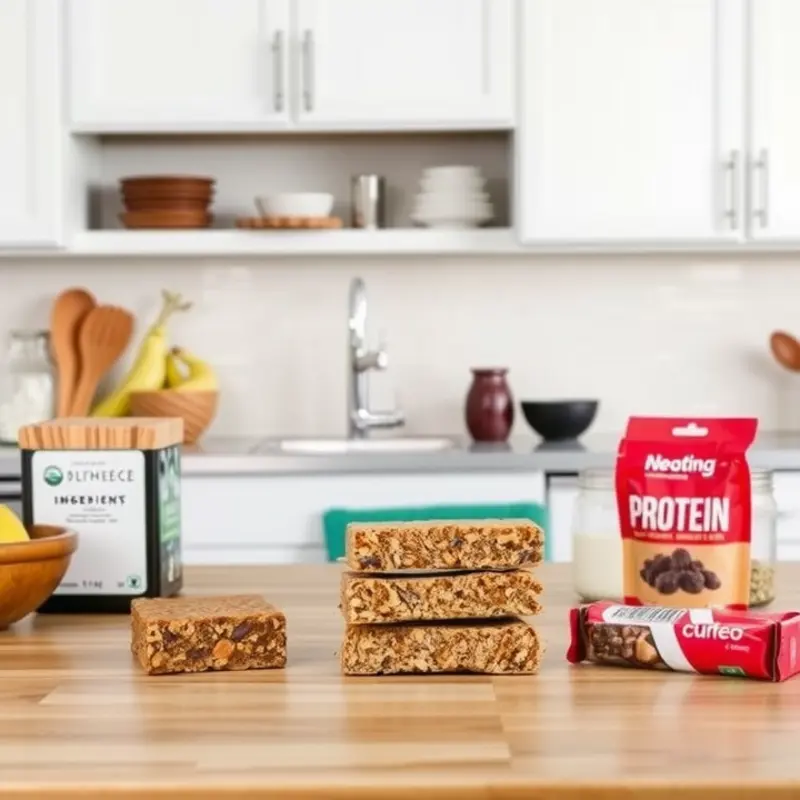The rise of protein bars in the health and fitness market has sparked debate over their true nature. While marketed as a healthy snack or meal replacement, many consumers wonder whether these bars are simply candy in disguise. This discussion examines the ingredients, nutritional value, and health implications of protein bars compared to traditional candy, helping you make informed dietary choices.
Nutritional Breakdown of Protein Bars

Protein bars often come with labels boasting high protein content and health benefits. To understand if they truly offer nutritional advantages over candy bars, it’s crucial to investigate their ingredients and composition.
Protein Content: More Than Just a Number
A key differentiator between protein bars and candy is their protein content. Ideally, a protein bar should contain at least 10 grams of protein, primarily sourced from high-quality options such as whey, pea, or soy protein isolates. This protein helps with muscle repair and satiety, making it more than just a snack. However, clever marketing can sometimes mask lower protein content with added fillers, potentially reducing the bar’s efficacy.
The Sugar Challenge
Many protein bars contain hidden sugars, which can challenge their status as a health food. While candy bars are notorious for their sugar content, protein bars often use sweeteners such as honey, cane sugar, or corn syrup, which could contribute to a high glycemic index. It’s essential to choose bars with minimal added sugars, ideally less than 5 grams, to avoid energy crashes similar to those caused by candy bars.
Fiber: The Unsung Hero
Fiber is another critical component when distinguishing protein bars from candy bars. A good protein bar should contain at least 3 grams of fiber per serving. Ingredients like chicory root fiber or psyllium husk can contribute beneficial fiber, aiding in digestion and maintaining blood sugar levels. In contrast, lack of substantial fiber results in quick digestion and fails to provide long-term energy.
A Look at Additives
A closer inspection reveals that many protein bars contain artificial ingredients and preservatives to enhance taste and shelf life. These chemicals can include artificial flavors, colors, and sugar alcohols like maltitol or erythritol, which can cause digestive issues. A healthy protein bar should minimize these additives, keeping the ingredient list simple and natural.
Notably, whole food ingredients such as nuts, seeds, and dried fruits indicate a healthier profile. These not only contribute to nutritional value but also provide essential fats and micronutrients, further distancing protein bars from the empty calories typical of candy.
Choosing the right protein bar requires diligent label reading. For more insight into optimizing nutrition and avoiding misleading health claims, visit the nutritional adequacy basics.
In summary, while protein bars have the potential to offer genuine health benefits, many still straddle the line between nutrition and indulgence. By focusing on protein quality, controlling sugar levels, prioritizing fiber, and avoiding unnecessary additives, one can distinguish a nutritious choice from what is essentially a candy bar in disguise.
Making Informed Choices

Recognizing a truly nutritious protein bar from a sugary snack in disguise involves understanding labels, ingredients, and nutritional roles. One primary factor to consider is the macronutrient composition. Begin by examining the protein content. Ideally, a good protein bar should contain at least 10 grams of protein. This ensures the snack serves its intended purpose as a protein supplement, aiding in muscle repair and growth.
Next, scrutinize the sugar content. A protein bar with high sugar levels might lean more towards being a candy bar. Aim for bars with no more than 5 to 7 grams of sugar. Naturally occurring sugars, such as those from dried fruits, are preferable over added sugars. However, excessive amounts can still be detrimental.
Another key consideration is the ingredient list. Opt for bars that incorporate whole foods like nuts, seeds, oats, and fruits. These ingredients not only provide nutrients but also contribute to satiety and sustained energy. Be cautious of bars with long lists of unpronounceable components. Typically, such ingredients are artificial additives or fillers, which can dilute the nutritional quality.
Fiber is another important element to examine. A nutritious protein bar should contain at least 3 grams of fiber. This aids in digestion and helps keep you feeling full longer. Processed bars often lack fiber, which compromises their role as a healthy snack option.
Understanding the role of healthy fats is crucial. Look for bars containing unsaturated fats from sources like nuts, seeds, or coconut. These fats are beneficial for heart health and contribute valuable calories for energy. Avoid bars high in hydrogenated oils or trans fats, as these can be harmful to health.
Finally, consider integrating a holistic approach to your protein intake. Balance bars with other natural sources of protein throughout the day, such as legumes, poultry, or dairy. This aligns with the philosophy of easy plant-based eating, which suggests varying your protein sources. This diversity ensures nutrient adequacy and keeps meals exciting.
Equipped with these guidelines, you can make informed decisions and enjoy protein bars that genuinely support your nutritional goals. Remember, effective label reading and ingredient assessment are skills that enhance your overall dietary awareness, allowing for a healthier lifestyle.
Final words
Navigating the world of nutrition can be confusing, especially with products like protein bars that occupy a gray area between healthful eating and indulgent snacking. By understanding the ingredients and nutritional content of these bars, you can make more informed choices that align with your health goals. Remember, not all protein bars are created equal. Armed with knowledge, you can distinguish between those that offer health benefits and those that are more akin to candy. Prioritize bars with whole, recognizable ingredients for a nutritious snack.








